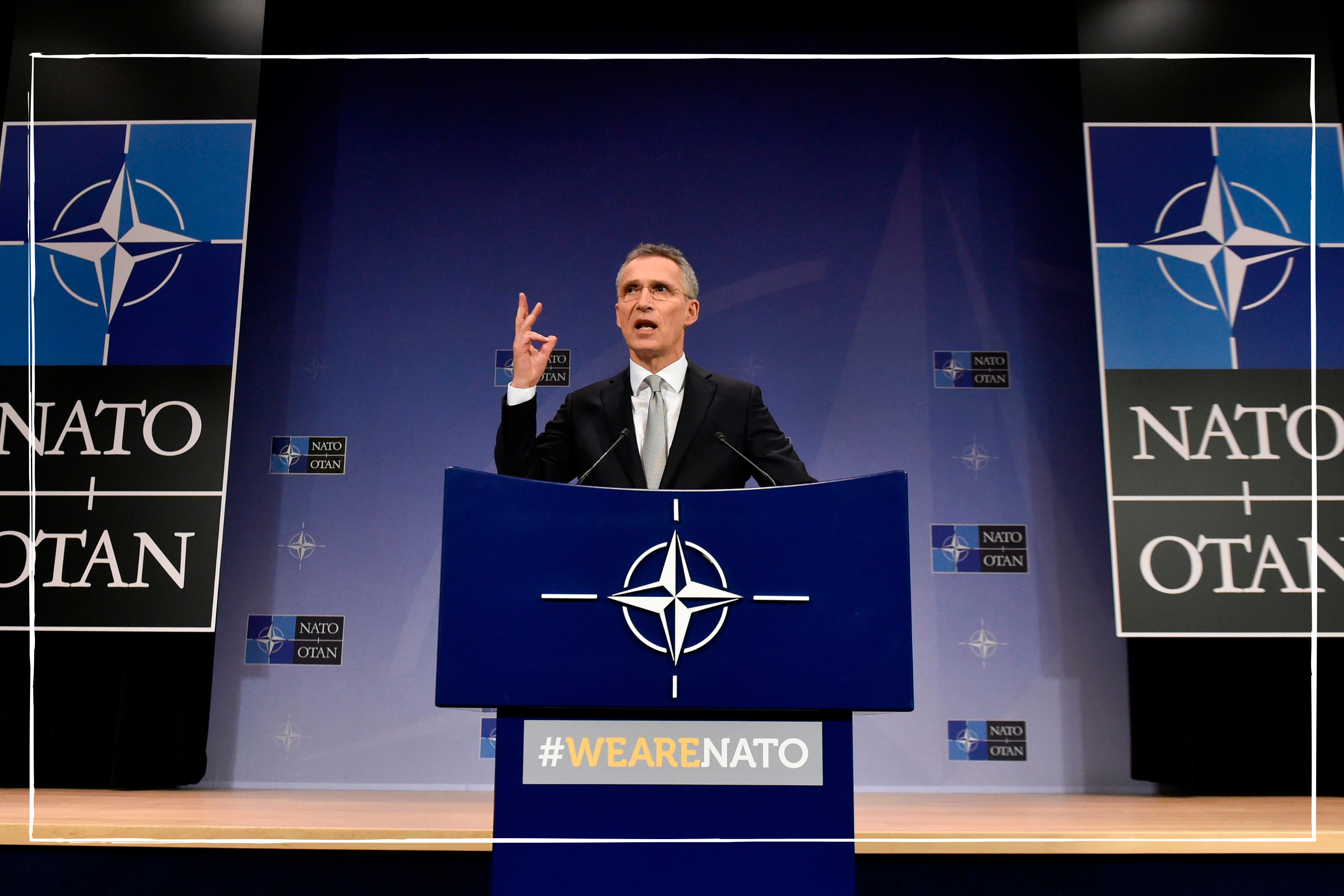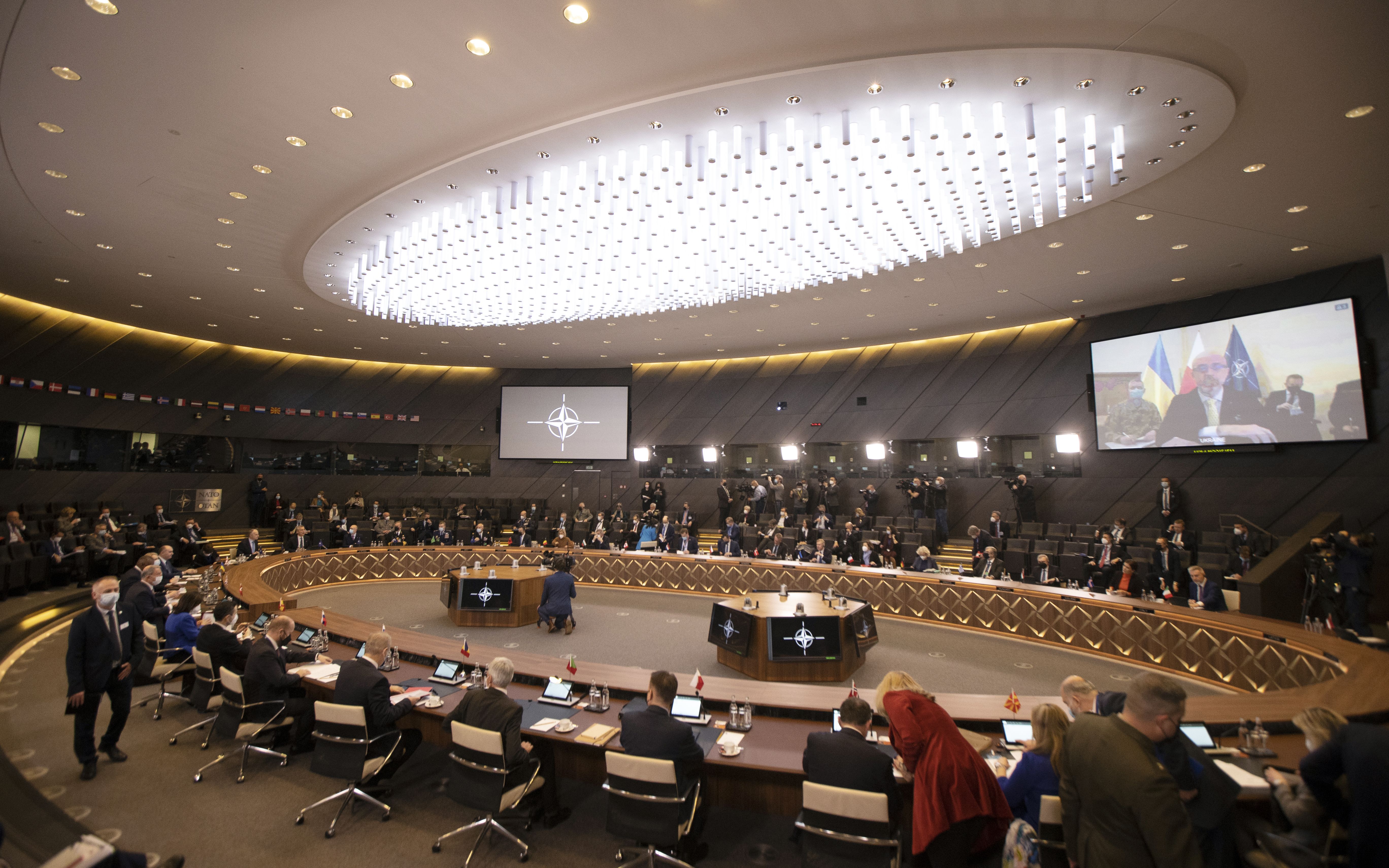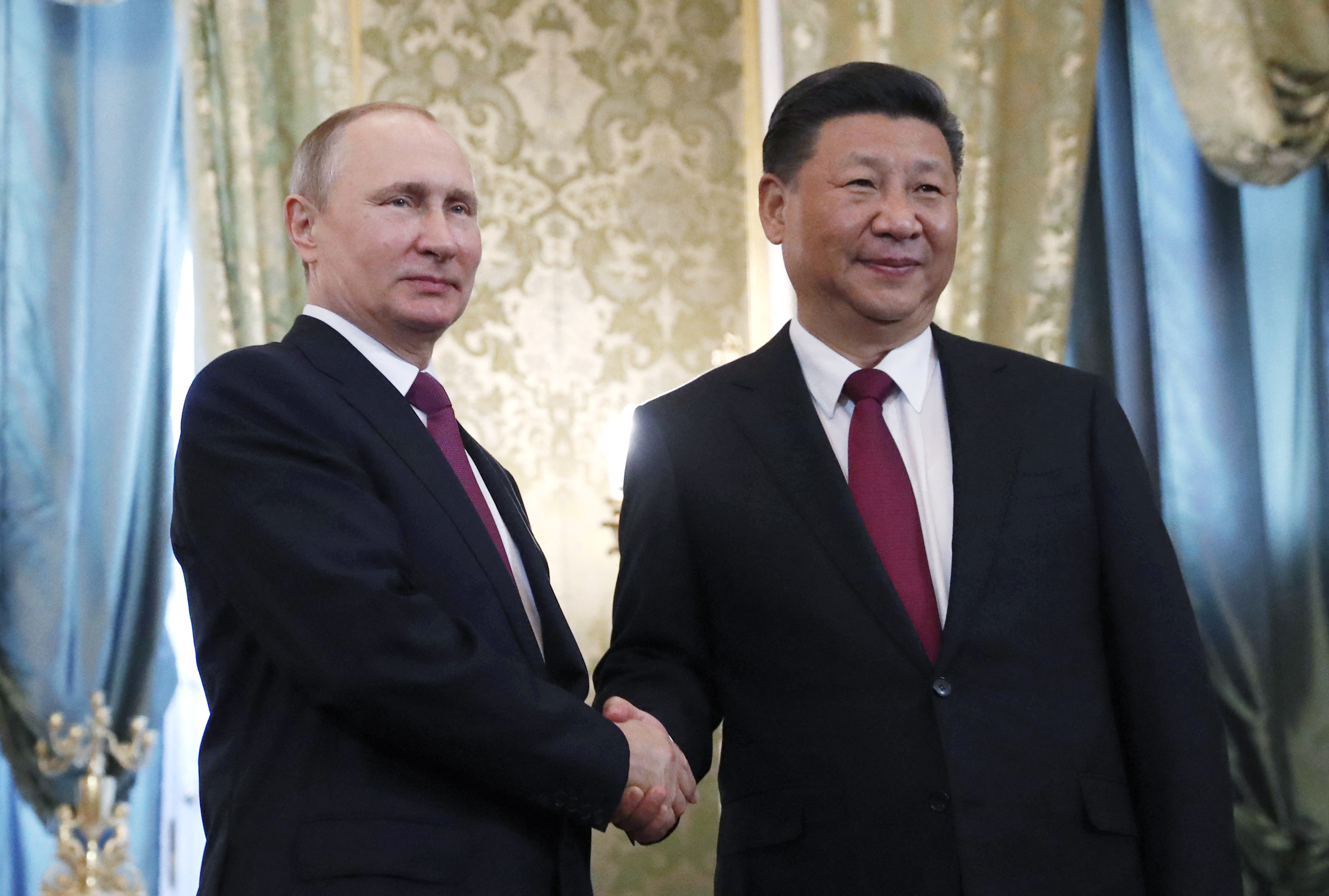What does NATO stand for and what is its purpose? Plus the list of member countries


With Russia's war escalating and pressure rising on the West to act, many want to know what does NATO stand for and what is its purpose?
Russia's invasion of Ukraine has generated an international response of contempt and sanctions on the Kremlin, since Russian troops first crossed the border into the country in February 2022. The US and European countries including France, Italy and Germany have all publicly condemned Putin and his army for the ongoing attack. With UK Prime Minister Boris Johnson even calling an emergency COBRA meeting to discuss how Britain will support Ukraine during it's time of need. Global citizens are also eager to learn how to donate to Ukraine and help it's civilians as frantic scenes of destruction, loss of life and Ukrainian refugees play out in the worldwide media.
Some are still coming to grips with what warranted the invasion in the first place, with many news reports bringing up the organisation NATO in conjuction with war reports. We share all the need-to-know information on the international alliance and why it's linked to the Russian invasion.
What does NATO stand for?
International cross-country alliance NATO stands for North Atlantic Treaty Organisation. NATO was formally established in April 1949, four years after World World 2 - when the West were worried about a potential attack by the Soviet Union. As a result, 12 countries including the UK and US came together to sign a treaty in Washington DC.
These 12 countries have come to be known as the founding nations of NATO, though the organisation has expanded significantly since then. Original members include: Belgium, Canada, Denmark, France, Iceland, Italy, Luxembourg, the Netherlands, Norway and Portugal. Plus the UK and the US.

NATO's headquarters are based in Brussels, Belgium in a modern, glass building located on Boulevard Leopold III. This has been it's permanent base since 1967 after first being based in London and then Paris for a short while in 1952. It is home to NATO's North Atlantic Council who make key political decisions, plus delegates representing member countries.
NATO is an international alliance - much like the G7 summit - where 7 countries come together each year to discuss global issues and maintain peace and social justice.
GoodtoKnow Newsletter
Parenting advice, hot topics, best buys and family finance tips delivered straight to your inbox.
What is NATO's purpose?
In a nutshell, NATO's purpose is to provide support, security and a united front when one of its member countries are threated by another. When the 12 founding nations sat down to sign the treaty in 1949, they agreed to "safeguard the freedom, common heritage and civilization of the peoples, founded on the principles of democracy, individual liberty and the rule of law."
NATO describe themselves as both a political and military alliance who prioritises both in their work:
- Political: "NATO promotes democratic values and enables members to consult and cooperate on defence and security-related issues to solve problems, build trust and, in the long run, prevent conflict."
- Military: "NATO is committed to the peaceful resolution of disputes. If diplomatic efforts fail, it has the military power to undertake crisis-management operations. These are carried out under the collective defence clause of NATO's founding treaty - Article 5 of the Washington Treaty or under a United Nations mandate, alone or in cooperation with other countries and international organisations."
Historically, NATO have intervened in a number of conflicts. This includes ones in Bosnia and Herzegovina, Kosovo and Libya.
During the current Russian invasion, several NATO member countries have pledged military aid to Ukraine. US president Joe Biden has announced $350 million worth of American weapons will be dispatched. Whilst UK Prime Minister Boris Johnson told parliament that they would give "lethal aid in the form of defensive weapons and non-lethal aid".
Additionally, the Netherlands plans to supply air defence rockets and anti-tank systems to Ukraine. France have given defensive anti-aircraft and digital weapons. And Romania - who shares a border with Ukraine - has sent fuel, armour and additional military material. Whilst also offering to treat wounded citizens in it's 11 military hospitals.
More recently, the US has shown support for Taiwan, amid growing tensions with China.
Which countries are in NATO 2022?
- Belgium - joined 1949
- Canada - joined 1949
- Denmark - joined 1949
- France - joined 1949
- Iceland - joined 1949
- Italy - joined 1949
- Luxembourg - joined 1949
- Netherlands - joined 1949
- Norway - joined 1949
- Portugal - joined 1949
- United Kingdom - joined 1949
- United States of America - joined 1949
- Greece - joined 1952
- Turkey - joined 1952
- Germany - joined 1955
- Spain - joined 1982
- Czech Republic - joined 1999
- Hungary - joined 1999
- Poland - joined 1999
- Bulgaria - joined 2004
- Estonia - joined 2004
- Latvia - joined 2004
- Lithuania - joined 2004
- Romania - joined 2004
- Slovakia - joined 2004
- Slovenia - joined 2004
- Albania - joined 2009
- Croatia - joined 2009
- Montenegro - joined 2017
- North Macedonia - joined 2020
There are a total of 30 countries who are members of NATO. The last country to sign up was North Macedonia on March 27, 2020. The alliance state that they have an open-door policy when it comes to countries wanting to join. However, they must be prepared to meet certain criteria to gain membership.
"Any European country in a position to further the principles of the Washington Treaty and contribute to security in the Euro-Atlantic area can become a member of the Alliance at the invitation of the North Atlantic Council," their website states.
"Countries aspiring for NATO membership are also expected to meet certain political, economic and military goals in order to ensure that they will become contributors to Alliance security as well as beneficiaries of it.”
Who is the leader of NATO?
NATO is officially headed up by the former Norwegian Prime Minister Jens Stoltenberg. The 62-year-old became Secretary General in October 2014 and he will remain leader of NATO until September 2022.
Discussions are already underway to find Stoltenberg's replacement. Generally representatives from the member states offer up candidates and decide amongst themselves. Politico have reported that a female or Eastern European leader is hoped for next. Though we'll have to wait until the NATO leaders' summit in Madrid in late spring or early summer to learn who it is.
In addition to the Secretary General is the Chairman of the NATO Military Committee. This is currently Admiral Rob Bauer of the Royal Netherlands Navy.
What is the NATO logo?
The official NATO logo was finalised in October 1953. It features a white and blue compass on a dark blue background - with the blue representing the Atlantic Ocean. According to a NATO official "the emblem is a star gyronny, which represents the four points of the compass."
Why is Ukraine not in NATO?
It's generally understood that Moscow do not want Ukraine to join NATO due to it's close proximity to Russia. NATO - comprising of mainly Western countries - could be seen as a threat to Eastern power. And previous USSR states like Ukraine joining the alliance only adds to this theoretical menace.
According to Business Insider's Jeremy Bender, Russia's president Vladimir Putin is sceptical of NATO for political reasons:
"For Putin, the peeling away of countries from Russia towards NATO comes as both an existential threat and a personal insult," he says. "As a former agent in the KGB and an avowed nationalist, Putin has dreams of resurrecting the glories of Imperial Russia — a goal that is seriously hampered by the inclusion of what Putin would deem rightful Russian lands, such as the Baltics, into the NATO alliance."
https://www.youtube.com/watch?v=2umsr04CFTo
There's also some existing bad blood between Russia and NATO. In 2002, a Russia-NATO Council was formed to establish open communication and handle security issues and joint projects. However, this was suspended in 2014 when Russia first invaded and occupied the Crimean peninsula in Ukraine.
Ukraine did apply for NATO membership in 2008, however the organisation decided against them joining. Despite this Ukraine remains a member of the North Atlantic Cooperation Council (joined 1991) and the Partnership for Peace programme (joined 1994).
A renewed effort to gain membership was brought about by Ukranian president Volodymyr Zelenskyy in 2020. He approved Ukraine’s new National Security Strategy which explicity stated that joining NATO was a primary goal.
Is China in NATO?
No, China is not a part of NATO and like Russia, has openly criticised the organisation and it's expansion in the East. In February 2022, Chinese President Xi Jinping met with Vladimir Putin - and the two released a strategy document which outlined their issues with NATO.
"The sides oppose the further expansion of NATO and call on the North Atlantic Alliance to abandon the ideological approaches of the Cold War era,” the document said. They added that they want the organisation to instead "respect the sovereignty, security and interests of other countries, the diversity of their civilizational, cultural and historical backgrounds, and to exercise a fair and objective attitude towards the peaceful development of other States."

China and Russia also shared that they were "seriously concerned" about the AUKUS defence alliance. Announced on September 15, 2021, the pact will see the US and UK help equip Australia with nuclear-powered submarines.
Prime Minister Boris Johnson said that the pact would "preserve security and stability around the world" and generate "hundreds of high-skilled jobs". Though China disagree, calling the alliance "extremely irresponsible".
Chinese foreign ministry spokesman Zhao Lijian added that it "seriously undermines regional peace and stability and intensifies the arms race".
Video of the Week:

Emily Stedman is the former Features Editor for GoodTo covering all things TV, entertainment, royal, lifestyle, health and wellbeing. Boasting an encyclopaedic knowledge on all things TV, celebrity and royals, career highlights include working at HELLO! Magazine and as a royal researcher to Diana biographer Andrew Morton on his book Meghan: A Hollywood Princess. In her spare time, Emily can be found eating her way around London, swimming at her local Lido or curled up on the sofa binging the next best Netflix show.